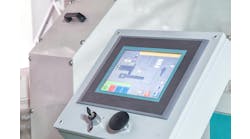With advanced communication technology, what sorts of additional information are stacklights able to provide that can be of use to operators and floor managers?
John Curtin, director, automation solutions, Motion Industries: Advantages in wireless communication have greatly enhanced the potential for stacklights to become far more helpful to operators and production managers. Traditionally, stacklights have been stand-alone indicators for a few specific functions of a single process. Now, stacklights are able to be networked. This allows the production manager to identify and document faults and unproductive time throughout the plant. In addition to pinpointing the location of a fault, reducing response time and downtime, this information can also reveal opportunities to improve processes and plant productivity.
The other piece of information that has been popular is simply displaying that the machine is in idle state. This would typically suspend all other forms of indication. We are all familiar with the spinning icon on our computers, and now this is available for machines, as well. Basically, it indicates the machine is not ready. Again, colors can be used as part of a communication plan to indicate the reason for the idle time and call for specific personnel to respond. As soon as the machine is ready, the indicators and stacklights revert back to normal operations, just like your computer.
Werma clients are very creative and have come up with very interesting applications for our stacklights with communication—wireless—technology.
Carter Williams, product manager, Siemens: Communication capability allows stacklights to send diagnostic information through sensors on the machine to the operator regarding the condition of the machines. This data can be used to schedule maintenance or repairs that could possibly prevent more costly damage to equipment if it went unmonitored.
In addition to wireless technology, we are seeing stacklights that have auditory alerts to supplement the visual indicators. These are moving beyond the traditional blaring alarms to include different tones, MP3 files with music or voice annunciators that identify the machine and the type of error.



















